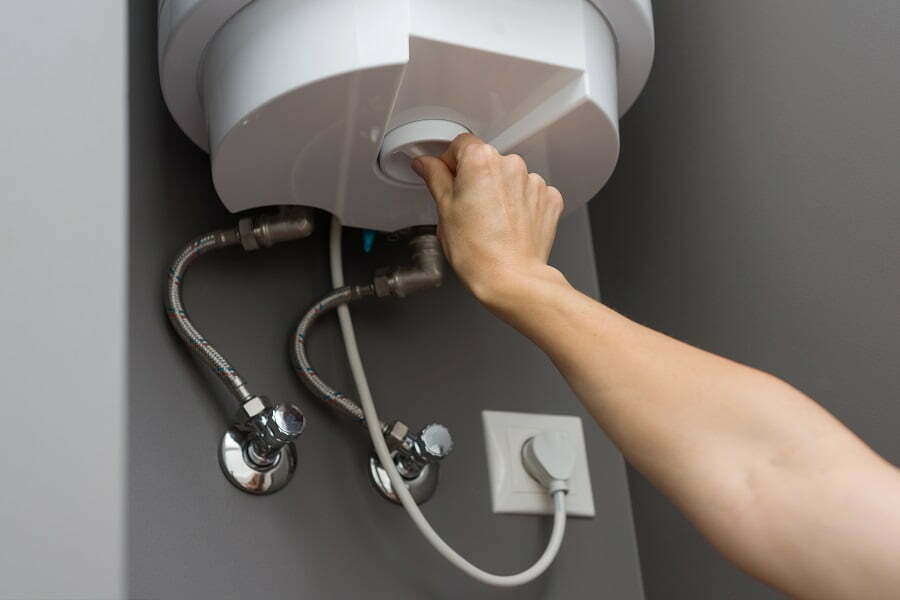Last updated on
This article looks at some common problems associated with water heaters, and some tips on how to solve them.
One of the most important appliances in your home is your water heater. It’s not much use when it comes to comfort if you have no hot water or rarely any hot water. Rusted or leaking tanks are also potential safety hazards that must be taken care of right away.
Leakage

When your water heater starts leaking, this is a sign that you need to replace it. However, if you’re unsure of the cause of the leakage, it would be best to turn off the power or gas supply first. You may also want to contact a professional plumber before attempting any serious repairs.
As indicated by the team behind waterheaterleakinginfo.com, leakages are often caused by rust, corrosion, or sediment build-up. They’re usually easy to correct if done correctly. Leakages are also sometimes caused by loose bolts.
Leaks are also often indicated when you find pooling water around your water heater. As already mentioned, flapper valves are one of the most common causes of leakage in storage tanks. If your tank is leaking, this would be a good time to check the thermostat and temperature-pressure relief valve too. They should also be checked annually if possible to ensure that they’re working correctly.
Rust or Corrosion

If you find rust or even orange/red particles around your water heater, this is an indicator that there’s corrosion. As already mentioned, this could also indicate sediment build-up. The cause of the rusting could be high PH balance levels in your water supply, chlorine in the water supply, or hydrogen sulfide (which is actually quite harmful).
Sediment can accumulate anywhere within the tank; it might be on the floor of the tank, holding up one side at times, and spilling out when you remove the T&P valve. If your water heater has rust patches on it, don’t worry too much about it unless these start to get bigger over time.
However, if you notice rust inside your tank or at the bottom of the tank, this is a clear sign that you have corrosion. You should then get rid of the rust by using phosphoric acid or other rust removing solutions diluted with water. Some people recommend sandblasting for particularly stubborn rust, but this isn’t something to be attempted at home unless done by professionals.
Corrosion in your tank can lead to leaks, which in turn could result in an explosion if left unchecked. If you notice signs of corrosion, make sure that there are no flammable materials around when you perform repairs, and always ensure that the power or gas supply is off when replacing parts like thermostats or heating elements.
Also, check all connections regularly for signs of leakage and corrosion to avoid serious problems later on; it’s easier to take care of these problems early on than it is when they’ve developed into bigger issues.
Sediment Build-up
Over time, sediment can accumulate in your water heater tank and this can cause the unit to malfunction. The only way to remove this sediment is by flushing out the tank, but you should never do this unless instructed to do so by a professional.
Sediment build-up can also be caused by nearby construction work or changes in flow direction in the pipes used for heating water. If nothing seems wrong with your unit after flushing out the tank, but you still find that there are problems later on, check all connections regularly for signs of leakage and corrosion.
Sediment build-up could also indicate that you’re using hard water, which can cause problems for your household appliances.
Hard Water
If the water supply at home is particularly hard, this can cause problems with your appliances. You should then consider purchasing a water softener. This will reduce the number of minerals in the water that come into contact with appliances like hot water heaters and dishwashers.
If you decide to go ahead, don’t forget to replace softened water regularly so as not to damage your tank or pipes. The softer the water, the higher level of maintenance required for both tank and appliance due to corrosion caused by high pH levels.
Avoiding Common Mistakes When Replacing Your Tank
While replacing an old hot water heater might seem like a simple enough DIY project, there are still some mistakes that you might end up making. The most important thing to remember is to never go on with the replacement of the tank itself seems damaged in any way. If it’s leaking, make sure that you call a professional for repairs before moving forward with your plans.
The water heater is a very important appliance in your home, and you should consider replacing it when the time comes. If you stick to these guidelines, you’ll make sure that everything runs smoothly during the replacement process and avoid costly mistakes. You should also consider a home warranty plan to help offset some of the costs of repair or replacement.
Recap:



